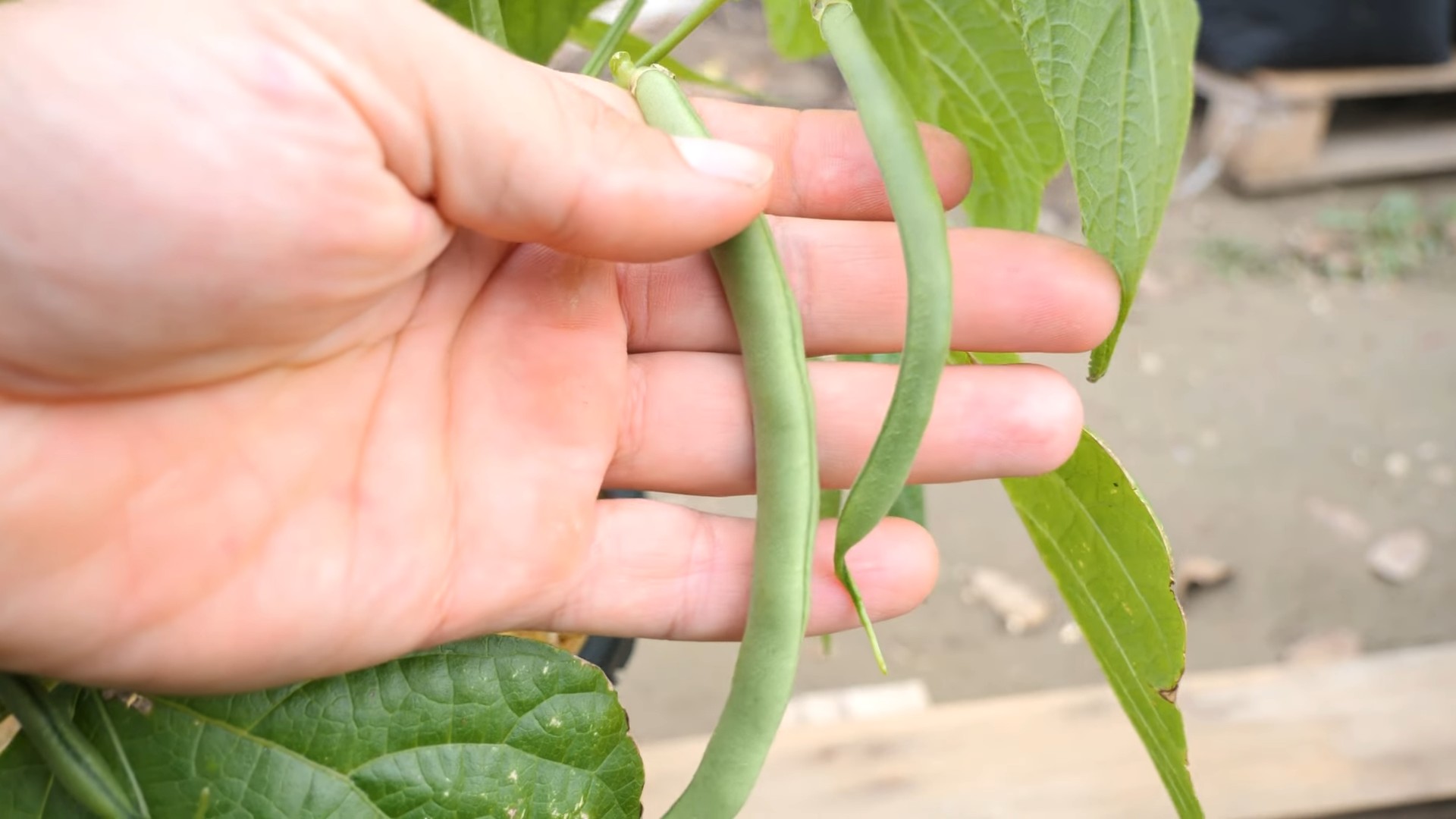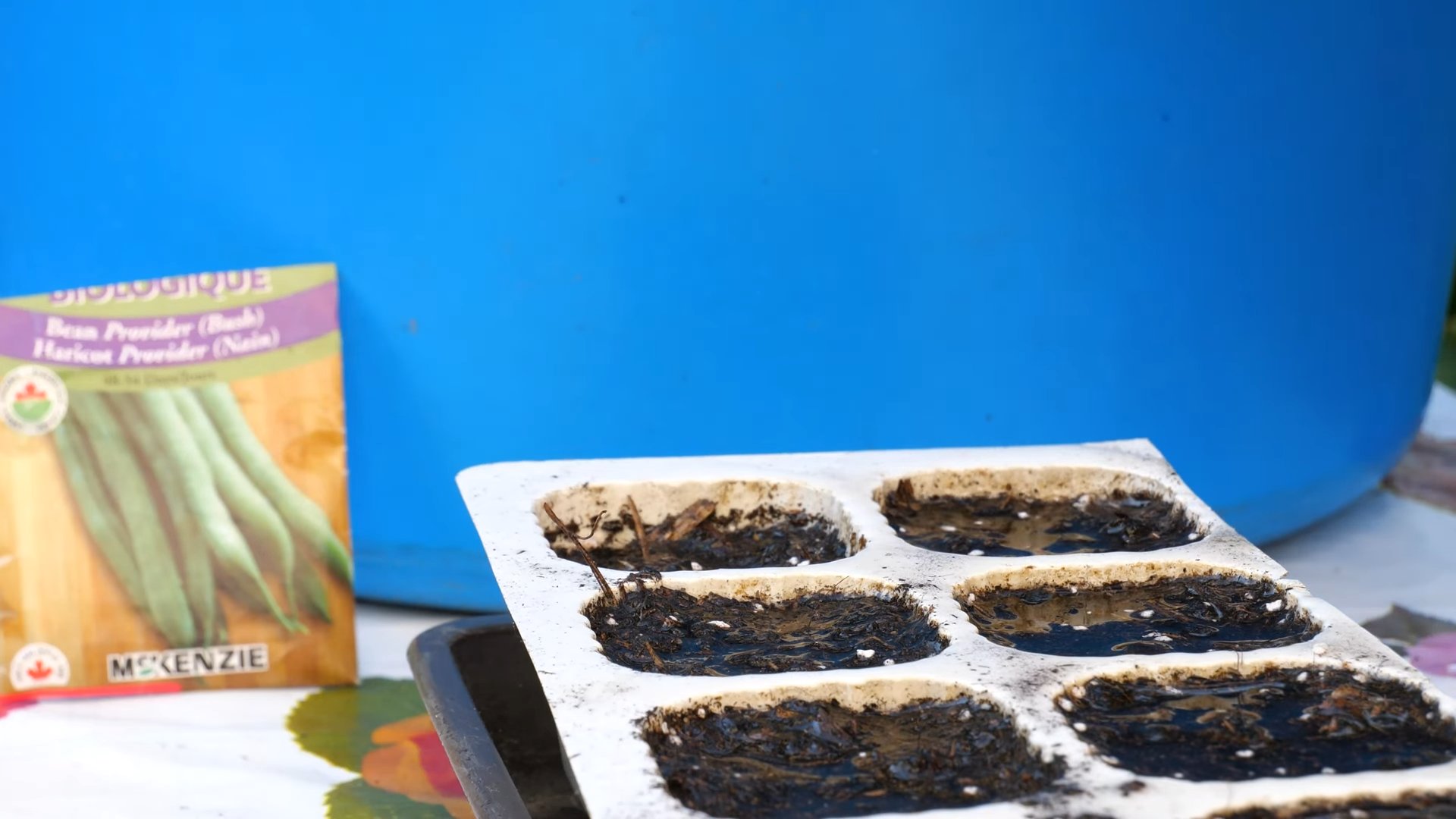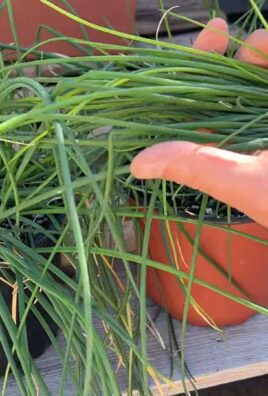Easy Green Beans Gardening: Imagine stepping outside your back door and harvesting a bowlful of crisp, tender green beans, bursting with flavor, all grown with your own two hands. Sounds idyllic, right? Well, it’s more achievable than you might think! For generations, growing your own food has been a source of pride and sustenance. From the victory gardens of wartime eras to the modern-day movement towards sustainable living, the desire to connect with our food source remains strong.
But let’s be honest, the thought of starting a garden can be daunting. Where do you even begin? That’s where this DIY guide comes in! I’m here to show you that easy green beans gardening is totally within your reach, even if you’ve never planted a seed before. We’ll break down the process into simple, manageable steps, sharing insider tips and tricks that will have you harvesting a bumper crop in no time.
Why green beans, you ask? They’re incredibly versatile in the kitchen, packed with nutrients, and relatively easy to grow, making them the perfect choice for beginner gardeners. Plus, there’s nothing quite like the taste of freshly picked green beans – it’s a world away from the store-bought variety. So, ditch the grocery store produce aisle and get ready to embark on a rewarding gardening adventure. Let’s get our hands dirty and grow some delicious green beans!

Growing Green Beans: A Beginner-Friendly Guide
Hey there, fellow gardening enthusiasts! I’m so excited to share my tried-and-true method for growing delicious, crisp green beans right in your own backyard. Green beans are super rewarding to grow, even if you’re a complete newbie like I was when I started. They’re relatively low-maintenance, produce a ton of beans, and nothing beats the taste of fresh, homegrown veggies. So, let’s dive in and get our hands dirty!
Choosing Your Green Bean Variety
Before we even think about planting, we need to decide what kind of green beans we want to grow. There are two main types: bush beans and pole beans.
* **Bush Beans:** These are compact and don’t require any support. They’re perfect for smaller gardens or containers. They tend to produce all their beans at once, making them great for canning or freezing.
* **Pole Beans:** These are vining beans that need a trellis or other support to climb. They produce beans over a longer period, so you’ll have a steady supply throughout the season.
Personally, I love growing both! Bush beans are great for a quick harvest, while pole beans keep me supplied for weeks. Some popular varieties include:
* **Bush Beans:** Blue Lake Bush, Contender, Provider
* **Pole Beans:** Kentucky Wonder, Blue Lake Pole, Scarlet Runner (these are also beautiful with their red flowers!)
Preparing Your Garden Bed
Okay, now that we’ve chosen our beans, let’s get our garden bed ready. Green beans need at least 6-8 hours of sunlight per day, so pick a sunny spot.
* **Soil Preparation:** Green beans prefer well-drained soil that’s rich in organic matter.
1. Start by clearing the area of any weeds, rocks, or debris.
2. Then, amend the soil with compost or well-rotted manure. This will improve drainage, add nutrients, and help retain moisture. I usually add a few inches of compost and work it into the top 6-8 inches of soil.
3. If your soil is heavy clay, you might also want to add some sand or perlite to improve drainage.
4. A soil test can be helpful to determine if your soil is lacking any essential nutrients. Green beans thrive in soil with a pH between 6.0 and 7.0. You can adjust the pH with lime (to raise it) or sulfur (to lower it).
* **Creating Rows:**
1. For bush beans, create rows that are about 2-3 feet apart.
2. For pole beans, you’ll need to set up your trellis or support system before planting. I like to use bamboo poles or a sturdy fence. Plant the beans at the base of the trellis, spacing them about 4-6 inches apart.
Planting Your Green Beans
Alright, the moment we’ve been waiting for – planting time! Green beans are warm-season crops, so it’s important to wait until the danger of frost has passed and the soil has warmed up to at least 60°F (15°C).
1. **Sowing the Seeds:**
* Sow the seeds directly into the ground, about 1 inch deep and 2-3 inches apart for bush beans, and 4-6 inches apart for pole beans.
* I like to soak the seeds in water for a few hours before planting. This helps them germinate faster.
2. **Watering:**
* After planting, water the seeds gently but thoroughly. Keep the soil consistently moist until the seedlings emerge.
3. **Germination:**
* Green bean seeds usually germinate within 5-10 days, depending on the soil temperature and moisture levels.
Caring for Your Green Bean Plants
Once your green bean seedlings have emerged, it’s important to provide them with the care they need to thrive.
* **Watering:**
* Water your green bean plants regularly, especially during dry spells. Aim to keep the soil consistently moist, but not waterlogged. I usually water deeply once or twice a week, depending on the weather.
* Avoid overhead watering, as this can promote fungal diseases. Instead, water at the base of the plants.
* **Weeding:**
* Keep your garden bed free of weeds, as they can compete with your green beans for nutrients and water. Hand-pull weeds regularly or use a hoe to cultivate the soil.
* Mulching around your plants with straw or wood chips can also help suppress weeds and retain moisture.
* **Fertilizing:**
* Green beans don’t need a lot of fertilizer, but a light feeding of a balanced fertilizer (like 10-10-10) can help boost growth. Apply the fertilizer according to the package directions.
* Avoid over-fertilizing, as this can lead to excessive foliage growth and fewer beans.
* **Supporting Pole Beans:**
* As your pole beans grow, they’ll need support to climb. Gently guide the vines onto the trellis or support system.
* You can also tie the vines to the support with twine if needed.
Dealing with Pests and Diseases
Green beans are generally pretty resilient, but they can be susceptible to a few pests and diseases.
* **Common Pests:**
* **Aphids:** These tiny insects suck sap from the plants, causing them to weaken and distort. You can control aphids with insecticidal soap or by spraying them with a strong stream of water.
* **Bean Beetles:** These beetles chew holes in the leaves and pods. You can hand-pick them off the plants or use an insecticide.
* **Slugs and Snails:** These slimy creatures can damage young seedlings. You can control them with slug bait or by hand-picking them off the plants at night.
* **Common Diseases:**
* **Powdery Mildew:** This fungal disease causes a white, powdery coating on the leaves. You can prevent powdery mildew by providing good air circulation and avoiding overhead watering.
* **Bean Rust:** This fungal disease causes reddish-brown spots on the leaves. You can control bean rust with a fungicide.
* **Root Rot:** This fungal disease causes the roots to rot, leading to plant death. You can prevent root rot by planting in well-drained soil and avoiding overwatering.
Early detection is key! Regularly inspect your plants for any signs of pests or diseases.
Harvesting Your Green Beans
Now for the best part – harvesting! Green beans are usually ready to harvest about 50-60 days after planting.
1. **When to Harvest:**
* Harvest your green beans when the pods are firm, crisp, and about the size of a pencil. They should snap easily when bent.
* Don’t let the pods get too large or they’ll become tough and stringy.
2. **How to Harvest:**
* Gently snap the beans off the plant, being careful not to damage the stems.
* Harvest your green beans regularly to encourage continued production.
3. **Storage:**
* Freshly harvested green beans can be stored in the refrigerator for up to a week.
* You can also freeze or can your green beans for longer storage.
Enjoying Your Harvest
Congratulations! You’ve successfully grown your own green beans. Now it’s time to enjoy the fruits (or rather, vegetables) of your labor.
* **Cooking:**
* Green beans can be eaten raw, steamed, boiled, sautéed, or roasted. They’re delicious in salads, stir-fries, and casseroles.
* My favorite way to cook green beans is to sauté them with garlic and olive oil.
* **Sharing:**
* Don’t forget to share your bounty with friends and neighbors! Homegrown green beans are a gift that everyone will appreciate.
Growing green beans is a rewarding experience that anyone can enjoy. With a little bit of planning and care, you can have a bountiful harvest of fresh, delicious beans right in your own backyard. Happy gardening!

Conclusion
So, there you have it! Growing your own green beans doesn’t have to be a daunting task. With these simple, easy green beans gardening tips, you can transform your backyard, balcony, or even a sunny windowsill into a thriving green bean haven. We’ve covered everything from seed selection and soil preparation to planting techniques and essential care, all designed to make the process as straightforward and rewarding as possible.
Why is this DIY approach a must-try? Because it puts you in control. You know exactly what goes into your food, avoiding harmful pesticides and enjoying the unparalleled freshness of homegrown produce. Imagine the satisfaction of harvesting plump, vibrant green beans just minutes before they grace your dinner plate. The taste difference alone is enough to convert anyone to the joys of home gardening. Plus, it’s a fantastic way to connect with nature, reduce your carbon footprint, and even save money on your grocery bill.
But the beauty of gardening lies in its adaptability. Feel free to experiment with different varieties of green beans. Bush beans are perfect for smaller spaces, while pole beans offer a vertical gardening solution and often produce a larger yield. Consider adding companion plants like marigolds or nasturtiums to deter pests and attract beneficial insects. You can also try succession planting, sowing new seeds every few weeks, to ensure a continuous harvest throughout the growing season. If you’re feeling adventurous, explore different growing mediums like raised beds or container gardening. The possibilities are endless!
Ultimately, the best way to learn is by doing. Don’t be afraid to get your hands dirty and embrace the learning process. Even experienced gardeners encounter challenges, but each setback is an opportunity to grow (pun intended!). We are confident that with a little patience and these easy green beans gardening tips, you’ll be enjoying a bountiful harvest in no time.
We’re eager to hear about your experiences! Did you try any of these techniques? What challenges did you face, and how did you overcome them? What varieties of green beans did you plant? Share your stories, tips, and photos in the comments below. Let’s create a community of green bean enthusiasts and inspire others to embark on their own gardening journeys. Happy gardening!
Frequently Asked Questions (FAQ)
What is the best time of year to plant green beans?
The ideal time to plant green beans is after the last frost of spring, when the soil has warmed to at least 60°F (15°C). Green beans are sensitive to cold temperatures, so planting too early can hinder germination and growth. In most regions, this typically falls between late spring and early summer. You can check your local weather forecast and planting calendars to determine the best time for your specific area. For a continuous harvest, consider succession planting, sowing new seeds every 2-3 weeks throughout the growing season.
What kind of soil is best for growing green beans?
Green beans thrive in well-drained, fertile soil that is rich in organic matter. The ideal soil pH is between 6.0 and 7.0. Before planting, amend your soil with compost or well-rotted manure to improve drainage, fertility, and water retention. Avoid heavy clay soils, as they can become waterlogged and inhibit root growth. If you have clay soil, consider adding sand or other amendments to improve drainage. A soil test can help you determine the pH and nutrient levels of your soil and identify any necessary amendments.
How much sunlight do green beans need?
Green beans require at least 6-8 hours of direct sunlight per day to thrive. Choose a planting location that receives ample sunlight throughout the day. If you are growing green beans in containers, make sure to place them in a sunny spot. Insufficient sunlight can result in leggy plants with reduced yields. If you live in a particularly hot climate, providing some afternoon shade can help prevent the plants from overheating.
How often should I water my green bean plants?
Green beans need consistent moisture to produce a good harvest. Water deeply and regularly, especially during hot, dry weather. Aim to keep the soil consistently moist but not waterlogged. A good rule of thumb is to water when the top inch of soil feels dry to the touch. Mulching around the plants can help retain moisture and suppress weeds. Avoid overhead watering, as it can increase the risk of fungal diseases. Instead, water at the base of the plants using a soaker hose or drip irrigation system.
What are some common pests and diseases that affect green beans?
Green beans can be susceptible to various pests and diseases, including aphids, bean beetles, spider mites, and fungal diseases like powdery mildew and bean rust. Regularly inspect your plants for signs of pests or diseases. If you detect any problems, take action promptly to prevent them from spreading. Organic pest control methods, such as insecticidal soap or neem oil, can be effective for controlling aphids and other pests. Ensure good air circulation around the plants to help prevent fungal diseases. Remove any infected leaves or plants to prevent the spread of disease. Crop rotation can also help reduce the risk of soilborne diseases.
Do I need to fertilize my green bean plants?
While green beans are not heavy feeders, they can benefit from a light application of fertilizer. Avoid fertilizers that are high in nitrogen, as this can promote excessive foliage growth at the expense of bean production. A balanced fertilizer or one that is slightly higher in phosphorus and potassium can help promote healthy growth and abundant yields. Apply fertilizer according to the package instructions. You can also amend the soil with compost or well-rotted manure to provide a slow-release source of nutrients.
When are green beans ready to harvest?
Green beans are typically ready to harvest about 50-60 days after planting. The beans should be firm, plump, and snap easily when bent. Harvest the beans regularly, as this will encourage the plants to produce more beans. Overripe beans can become tough and stringy. Use scissors or pruning shears to harvest the beans, being careful not to damage the plants.
Can I grow green beans in containers?
Yes, green beans can be successfully grown in containers. Choose a container that is at least 12 inches deep and wide to provide adequate space for the roots to grow. Use a well-draining potting mix and ensure that the container has drainage holes. Bush bean varieties are generally better suited for container gardening than pole beans. Provide a trellis or support for pole beans to climb on. Water regularly and fertilize as needed.
How do I store green beans after harvesting?
Freshly harvested green beans can be stored in the refrigerator for up to a week. Place the beans in a plastic bag or container and store them in the crisper drawer. You can also freeze green beans for longer storage. Blanch the beans in boiling water for 2-3 minutes, then transfer them to an ice bath to stop the cooking process. Drain the beans thoroughly and freeze them in freezer bags or containers. Frozen green beans can be stored for up to 8 months.
What are some good companion plants for green beans?
Companion planting can help improve the growth and yield of green beans. Some good companion plants for green beans include:
* Marigolds: Deter pests like bean beetles and nematodes.
* Nasturtiums: Attract aphids away from green beans.
* Carrots: Improve soil structure and deter bean flies.
* Cucumbers: Provide shade and support for green beans.
* Potatoes: Help to break up the soil and improve drainage.
* Rosemary: Deters bean beetles.
Avoid planting green beans near onions or garlic, as they can inhibit growth.




Leave a Comment